Digital transformation is a big, challenging, vague initiative that lots of businesses -nearly 70% according to McKinsey- don’t succeed at. That's why we believe collaborative action could yield better results.
Over the course of the past few weeks, it was great to watch OPIN's mobility study group work alongside our automotive partners in discussing and developing mobility scenarios as part of the data alignment project.
The Mobility group is working towards an embedded entity model for insurers and OEMS to mutually benefit from shared insurance and connected car data. This is both working from the perspective of the OEM and the Insurer's perspective in a real-time integration where applicable.
During the next five to six weeks, we will be going from discovering what can be achieved to how we can produce PoCs and MVP. This includes:
- Dedicated discussion on ontology of connected car and insurance and entity relationships considering static and real-time events.
- Vehicle diagnostic data entities.
- Possible invitation to a tier 1 vehicle OEM to validate and take interest in the discussion, specific to service interfaces.
- Driver data sharing permissions for insurance premium advantage, action is to validate where we articulate the definition of data sharing agreements.
- Technical API and POC paper based on key building blocks for guidance for any POC approach.
Group members have explored different scenarios of how innovative insurance solutions could interact with connected vehicles. In practical terms, the challenge is to figure out what event data is needed and how that data could be integrated into insurance systems to explore different scenarios.

One of the scenarios considered involved the monitoring of a vehicle as it enters a flood zone and the subsequent steps that may be needed in checking coverage, triggering preventive content, checking health of vehicle and any damage it may have sustained, triggering first notification of loss, through to monitoring the state of repair and settlement of claim.

The aim is to generate advanced insights, better real time pricing, prevention and mitigation of loss and much more. But that is only a bilateral integration- insurance to mobility!
Opportunities are endless. What if smart homes and open banking data were added to the mix? How would we aggregate this much event data and towards what services? How would that advance the user's experience, improve quality in risk selection and claims prevention, enhance in-vehicle and in-home payments and transactions? That's where use case discovery comes in.
Progress is being made on developing the Property and Business Interruption data models. The next version release of the data standard will also include Pet and Credit insurance. More information coming soon.
Producing an open insurance standard is one part of the challenge. Another challenge is building-in interoperability to make as many services fit together as possible.
We plan to introduce additional exploratory projects and are working hard to elevate partnership opportunities among members and beyond the OPIN community.
Thanks to the insurers, startups, telematics vendors that are involved with us on this continuing endeavour.
